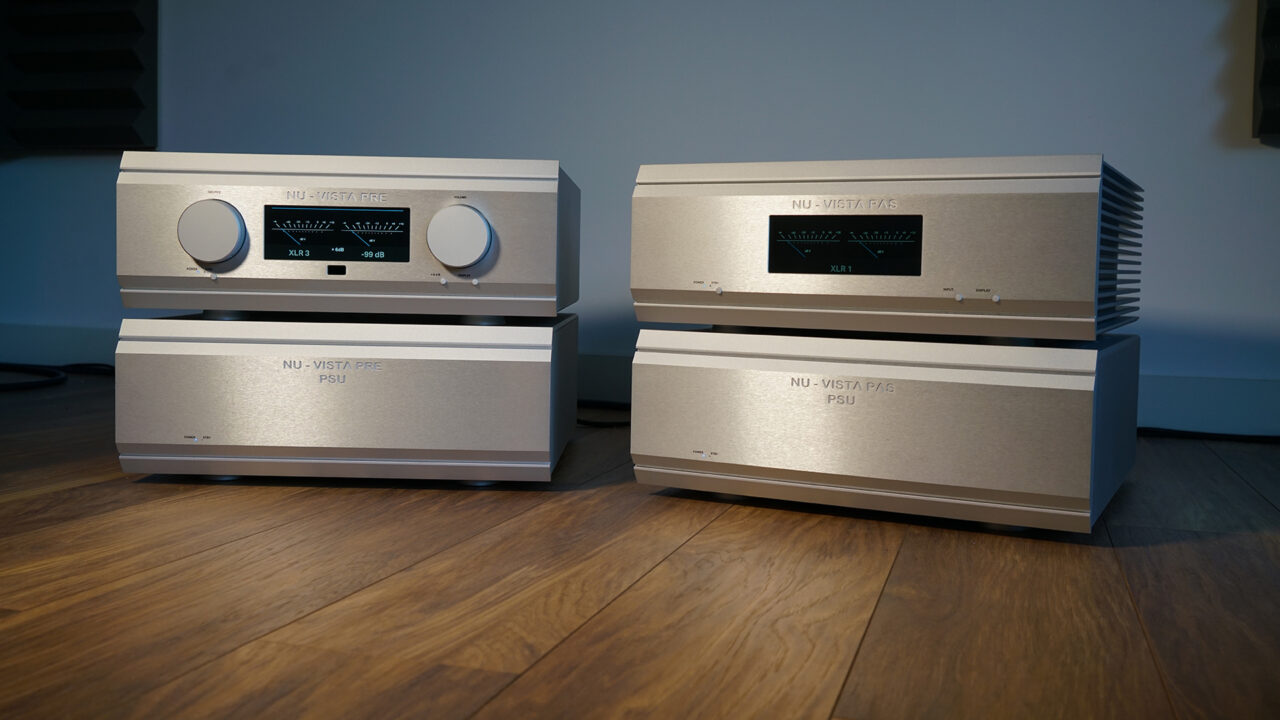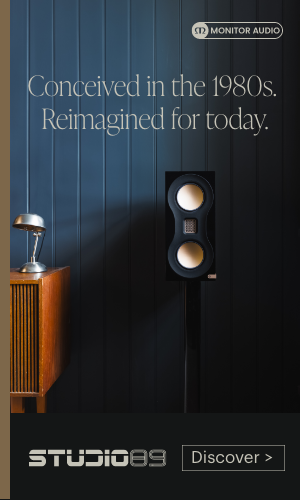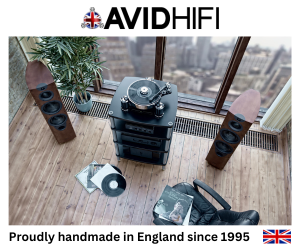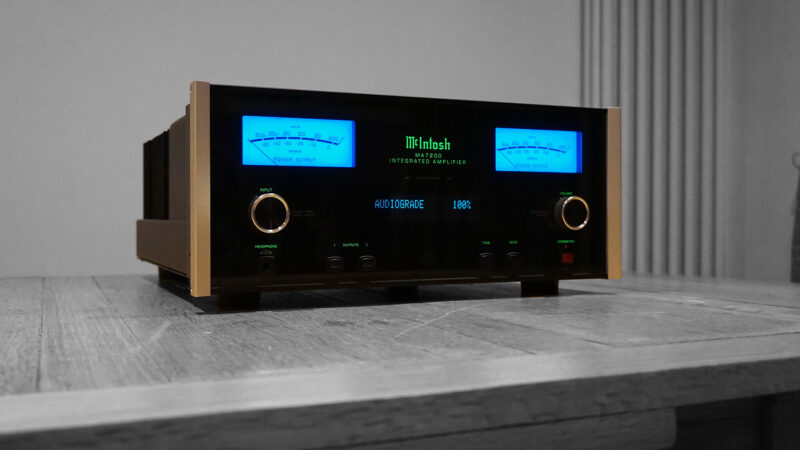Back in 2018 when Musical Fidelity founder Antony Michaelson announced his retirement and the sale of the brand to Vertriebs GmbH (parent company of Pro-Ject and many more, headed up by Heinz Lichtenegger), MF fans (myself included) collectively held our breaths.
Because full scale takeovers often mean a change of direction, resulting in the loss of a company’s DNA and original appeal. But having distributed MF gear for years, Heinz was well aware of what made the brand unique. So instead of changing Musical Fidelity’s direction, he reinforced it, by revisiting the products that made MF such a high-end threatening powerhouse for so long. This has meant fresh life given to icons past and present including its A1 amp, and making sure the M8xTT turntable finally gets the attention it’s always deserved.
Having rubbed shoulders with MF’s finest (and largest) solid state amps for some years, the reintroduced Nu-Vista models follow in the footsteps of the original models from 2014, only they’ve now been elevated as the brand’s flagship range under Lichtenegger. And rightly so in my opinion, as they combine all of MF’s solid state amplifier knowhow with what was the latest and most advanced tube of its time (the nuvistor), which bridged the gap between traditional valves of old and transistors, when they were produced back in the late ’50s.
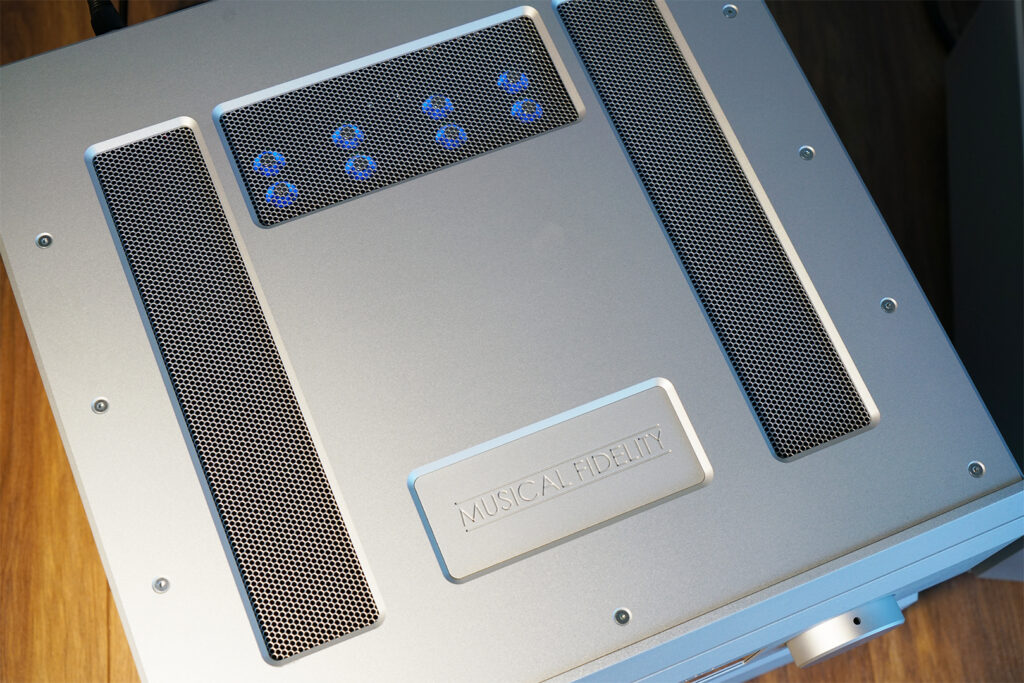
Those glowing blue lights reveal the all important nuvistor output devices from which the model range name is derived
This has led to the dedicated Nu-Vista PRE preamp (£20,499) and PAS power amp (£20,499) under review here, alongside the PAM mono block power amp (£40,998 for the pair), with the 800.2 integrated (£10,999) added back in July. The 600.2 model is bound to follow next, as the most attainable stepping stone into Nu-Vista territory for many.
I got the power
Starting with the PRE model, under its hood sits fully balanced internals (right down to the precision matched stepped attenuated volume control), with two pairs of 6S51N nuvistors per stereo channel, driving solid-state Class A outputs (which are basically mini op-amps with an optional 6dB of extra gain via a front panel switch). Each of its left/right PSUs are independently choke regulated (an approach MF also applies to its higher end solid state amps).
But that’s only half the story, because like the power amp, you also get a separate dedicated external PSU with twin toroidal transformers in an equally sized case, that’s almost half a metre wide/deep and over 18cm high. So when you factor in the power amp package too, that’s four large components you’ll need to accommodate, weighing between 22kg to 40kg each, hence you’ll need a rack (and back) up to the task. The extra box count of course isn’t just for bragging rights, as housing the mains transformers away from the all important audio circuits reduces noise and stray magnetic fields, with their large separate cases also acting as Faraday cages.

The large rotary input select and volume dials are silky smooth operators. The range is also available in black finish
The heaviest box of this Nu-Vista quad squad is the PAS power amp’s PSU, largely accounted for by its massive twin toroidal transformers. These feed the main PAS amp which houses twin choked PSUs and a separate eight 6S51N strong Nu-Vista stage within its fully balanced circuitry.
The main power stage then has five pairs of high power thermally compensated output transistors, with separate capacitors for bulk supply and one each for the output devices (an approach based on the beomothic Titan amp of old). Bias is set for over 5W of initial Class A operation, before sliding into Class B territory. All of which combines for a healthy 300W into 8 ohms (increasing to 500W into 4 ohms), enabling the Nu-Vista pre/power package to drive even the most demanding loudspeakers without worry.

Nu-Vista PAS power amp package, showing one of four backit display options
Connections wise you’re generously served if analogue is your dish of choice, with a dozen pairs of analogue inputs, split evenly over line-level (RCA) and balanced (XLR) connections. There’s also fixed and variable outputs (line-level and balanced), but alas no phono stage or digital inputs, underlining the Nu-Vista pairings’ thoroughbred status (and allowing for more dedicated Nu-Vista standalone products further down the line).
Four on the floor
Let’s be clear, unboxing these beasts requires some muscle, so you’ll need a good friend or willing beefcake to help get them sited (I managed solo, aided by some anticipatory adrenaline, given what I knew was waiting inside). These amps frankly dwarf my reference Musical Fidelity M6 pre/power amps in comparison, which at 45 x 37 x 12.5cm (WDH) aren’t petite by any stretch.
In their milled alloy flesh, the Nu-Vista pairing feels like the M6 models after being worked over by Rolls Royce. Their thick (25mm for the front panel) casework is beautifully finished and styled in a manor that’s luxurious yet purposeful. More credit is also due to Heinz and the team here for continuing the mature look and feel that MF finally settled on for its kit around 15 years ago, after a variety of restyles over the company’s history (including its best forgotten bling years). From their recessed top plates to the embossed branding, this is Musical Fidelity design at its finest – not overstated yet oozing presence.

Nu-Vista PRE (top) and dedicated PSU (bottom) sporting a dozen analogue inputs spread over RCA and XLR. Outputs follow suit, with fixed and variable offerings. Note the trio of connections to the PSU for left, right and control
Hooking them up is a tad more complex than your average pre/power package, but everything is clearly labelled, with quality cables supplied. Starting with the preamp, a large mains cable feeds the PSU, with twin five-pin and a single three-pin XLR linking it to the main unit.
The PAS power amp gets no less than five cables all in to link it up to its PSU, plus a mains cable for the latter. There’s the same trio of four and five pin XLRs to feed the PAS’s Nu-Vista stage independently, plus a pair of heavy duty Neutrik PowerCon connectors, feeding the left and right main power amp stages, again underlining the no-compromise approach to separation.

The top quality connections continue for the PAS power amp, with no less than five connecting cables for the Nu-Vista and main power amp stages
Once powered up the nuvistor valves let you know they’re awake, glowing red through to orange and then blue when fully warmed up.
The front panel displays are better executed than most and befits products at this price, with backlight options in white or black and plain text or analogue style VU meters to choose from. These can be selected via the front panel controls or via the PRE’s solid metal remote (which embarrasses the plastic supplied remotes of cheaper MF gear).

Probably the best quality remote Musical Fidelity has ever made, hewn from solid metal with a screw down battery cover
Performance
As regular Audiograde readers will know, I’ve been using MF’s M6 pre/power amps as my reference music makers for over a decade. Their solid build is ideal as reviewing kit, combined with a sensible spread of features, generous power and transparent musical delivery means they’re reliable employees day to day. So swapping them out for models considerably higher up the brand’s food chain makes for a revealing A-B test.
On a purely practical level, the first notable difference is the sensitivity of the Nu-Vista’s volume control which feels infinitely more precise with finer increments of adjustment, especially at low level listening, making the Nu-Vistas that bit better suited to everyday listening.
Partnering gear is an SME 20/2A turntable with Goldring Ethos cartridge and Primare R32 phono stage, a Primare NP30/NP5 Prisma MK2 streaming package and a range of loudspeakers including legacy Avalons, Dynaudios and Perlisten’s latest R5t floorstanders.

Under the bonnet of the PRE’s main control unit (left) and partnering PSU (right) reveals choke regulators and nuvistor valves for the former with twin toroids for the latter
First impressions show that those Musical Fidelity hallmarks of control, depth and effortless dynamics are present in spades. Living with the Nu-Vista pairing for weeks though reveals how much further they push this envelope compared to their cheaper stablemates, with greater channel separation and imaging to die for.
Play the remastered 24-bit/48kHz of Jennifer Warne’s grown-up cover of The Waterboys’ breakthrough smash The Whole Of The Moon from her The Hunter album and the depth and texture across the percussion is astounding, seemingly removing the gaps between recording, mastering and playback by taking you directly into the performance. And when it comes to the vocals the combination of grip combined with tickle-of-a-feather like delicacy presents them in a way few other amps can match. Just hearing her vibrato as she delivers “I spoke about wings…” at around 2:20mins in without being moved isn’t possible, thanks to the realism these amps bring to the music.
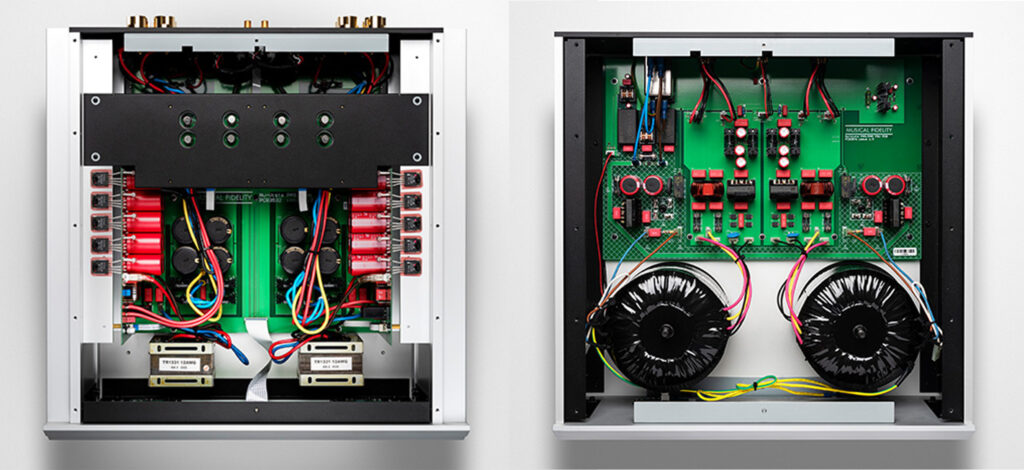
The PAS (left) revealing its bank of eight nuvistors set within the black bracing bar, with five transistors per side accounting for the generous heat sinking on the amp’s side cheeks. PSU (right) plays host to a pair of generous transformers, accounting for its 40kg heft
This isn’t to say though that these MFs are overly warm, as serve them up some hard rock like Soundgarden’s Spoonman (at 24-bit/192kHz via Qobuz) and that guitar comes through as raw and dangerous as live Piranha fish on toast. And while the track’s visceral power chords are projected without any holding back, even at window rattling levels there’s no sense of blurring at the extremes. Instead these amps let the music run riot as it wants to, while keeping everything in check with a firm grip in the background.
Dynamic scale its also up there with the best of them. Hearing the gathering thump of the drum medley around two minutes in on this song demonstrates a soundstage depth and clarity that feels more like stadium than home listening levels.
With so much power and investment in their dedicated and separated internals, these characteristics are perhaps not that surprisingly given what’s come before from this brand. But what the nuvistor approach seems to add to the already rich mix is a little more sweetness to the music, that gives it a greater sense of honesty.
Spinning a ’69 Island ‘pink rim’ pressing of Fairport Convention’s What We Did On Our Holidays and right from the opening song Fotheringay, Denny’s vocals and accompanying guitar sound mesmerizingly captivating because of how these amps can deliver all that power and scale with such gentility, that’s laced with subtle valve like textures to really bring the track to life.
In summary
Musical Fidelity has made many statement products over its life, and in many ways these latest Nu-Vista models are arguably its finest. Sure their substantial in size and weight, but compared to some of MF’s products past (including its AMS series) the Nu-Vistas are easier to live with, without compromising on sound.
Their build is as first class as you’d hope for at this price, but it’s in the sonic stakes where they really excel, with power, dynamics and effortless control combined with imaging and a sense of organic realism, that makes them a comparative high-end bargain compared to the competition.


